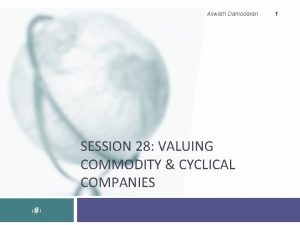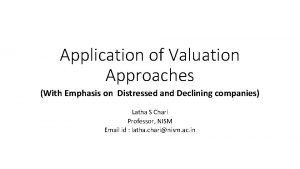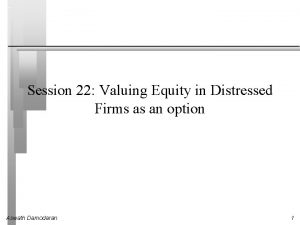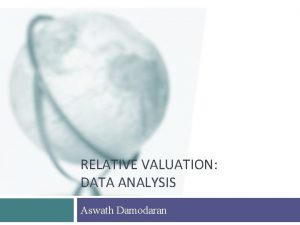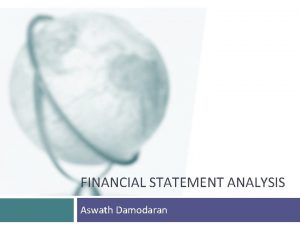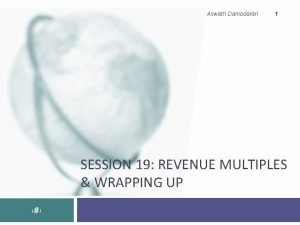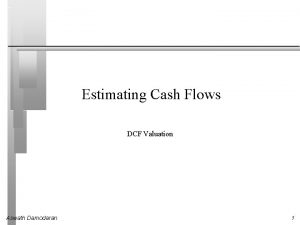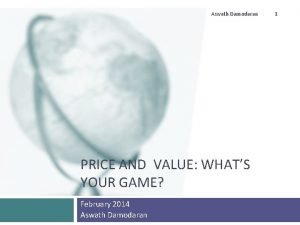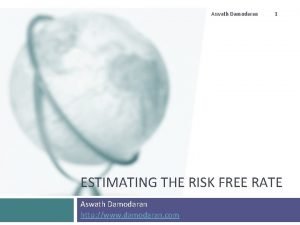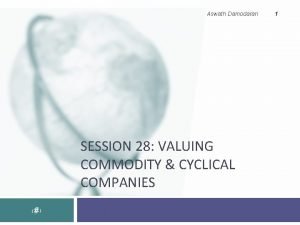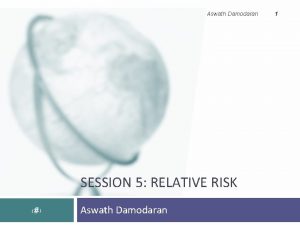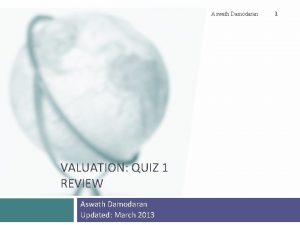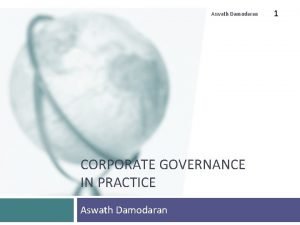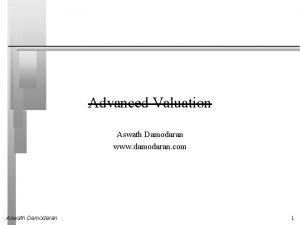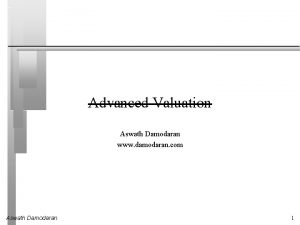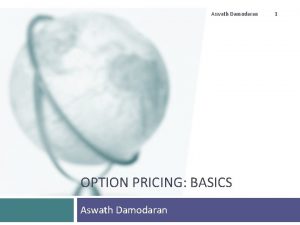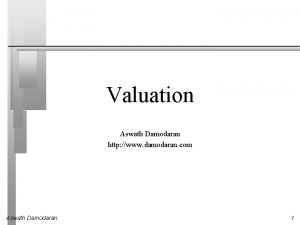Aswath Damodaran SESSION 28 VALUING COMMODITY CYCLICAL COMPANIES











- Slides: 11

Aswath Damodaran SESSION 28: VALUING COMMODITY & CYCLICAL COMPANIES ‹#› 1

Valuing Commodity & Cyclical Companies 2 Aswath Damodaran 2

Valuing cyclical and commodity companies 3 Aswath Damodaran 3

Lesson 1: The Operating Numbers will ebb and flow 4 perating numbers (and earnings in particular) will be volatile, even for mature firms. That volatility comes from economic cycles (for cyclical firms) and commodity price cycles (for commodity firms) If you value these firms based on the most recent year’s numbers, you can over value the firm (following a peak year) or under value the firm (following a bottom year). Normalize. Aswath Damodaran 4

5 Aswath Damodaran ‹#›

Lesson 2: With “macro” companies, it is easy to get lost in “macro” assumptions… Value you arrive at will be affected by your views on the economy or the price of the commodity. Value will reflect your views on macro variables and your views on the company, and it is difficult to separate the two. Start with a macro-neutral valuation (where you don’t take a point of view) and then present your macro views separately. 6 Aswath Damodaran 6

7 Aswath Damodaran

Lesson 3: Use probabilistic tools to assess value as a function of macro variables… Quantify the uncertainty about macro variables in a distribution (rather than a single price) and use that distribution in your valuation. You will get a distribution of value for the company that provides richer information for your decision making. 8 Aswath Damodaran 8

Shell’s Revenues & Oil Prices Shell: Revenues vs Oil Price 500, 000. 0 $ 120. 00 450, 000. 0 350, 000. 0 $ 100. 00 Revenues = 39, 992. 77 + 4, 039. 39 * Average Oil Price R squared = 96. 44% $ 80. 00 300, 000. 0 250, 000. 0 $ 60. 00 200, 000. 0 $ 40. 00 150, 000. 0 100, 000. 0 Average Oil Price during year Revenues (in millions of $) 400, 000. 0 $ 20. 00 50, 000. 0 0 198919901991199219931994199519961997199819992000200120022003200420052006200720082009201020112012201320142015 Revenue $- Oil price 9

10 Aswath Damodaran

Pricing Commodity/Cyclical Companies – Three choices for standardization 11 Base year numbers: Cycles are affecting all companies in the sector. Normalized numbers: Cycles are the only reason for operating number changes over time and that all companies will recover with the cycle. Potential: Assume that all reserves/potential are equally valuable. Aswath Damodaran 11
 Valuing commodity companies
Valuing commodity companies Valuing distressed and declining companies
Valuing distressed and declining companies Valuing a private company
Valuing a private company Valuing distressed companies
Valuing distressed companies Damodaran data
Damodaran data Investment philosophies aswath damodaran
Investment philosophies aswath damodaran Aswath damodaran accounting 101
Aswath damodaran accounting 101 Damodaran discount rate
Damodaran discount rate Aswath damodaran multiples
Aswath damodaran multiples Dcf aswath
Dcf aswath Aswath damodaran intrinsic value
Aswath damodaran intrinsic value Default spread damodaran
Default spread damodaran
